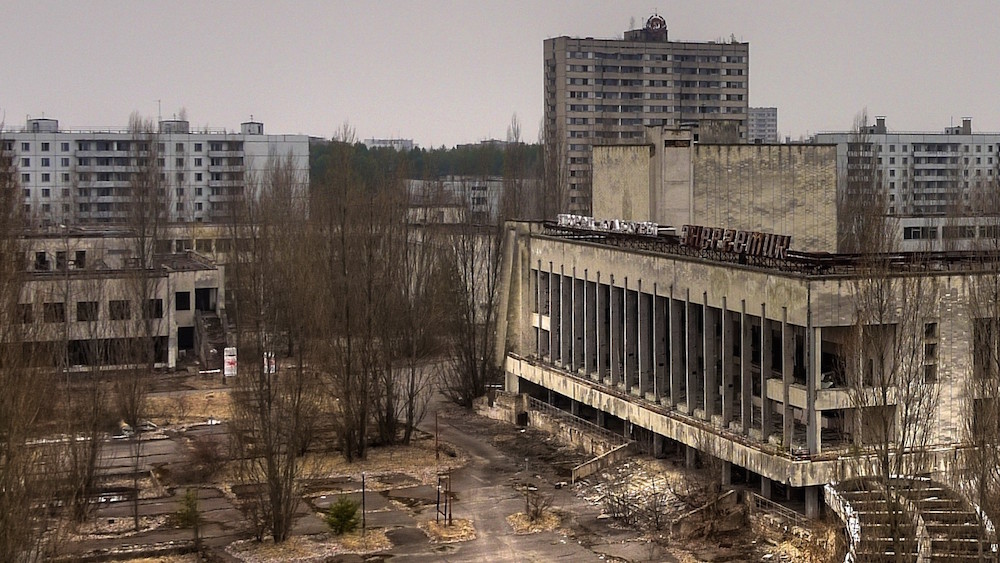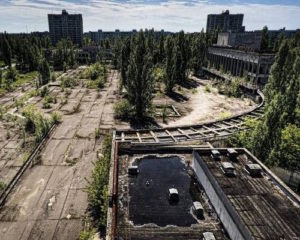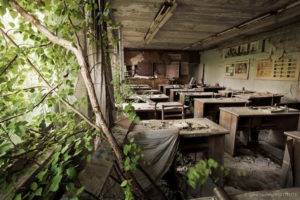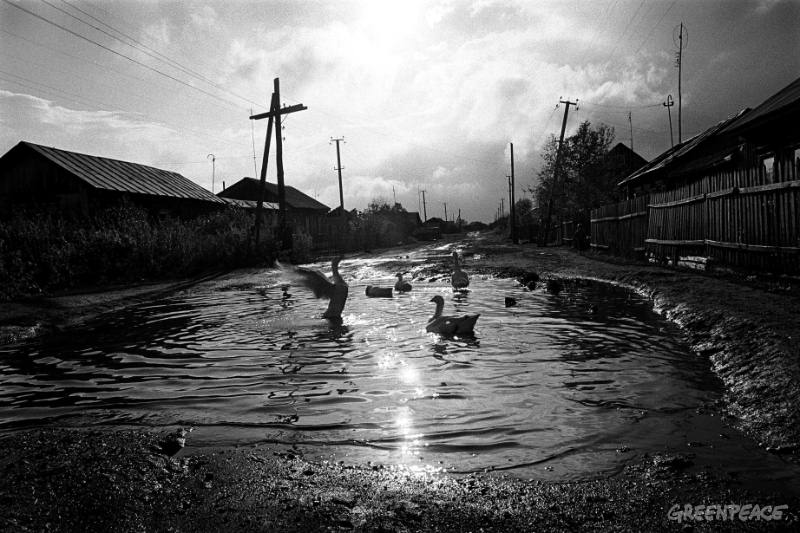Above, Pripyat two decades after the Chernobyl nuclear disaster.
Last week we looked at those elements which were essential to the cozy catastrophe. This week we’re taking a further look at the subgenre to dispel a couple misguided thoughts.
Formula Fiction
Ever since Brian Aldiss coined the term cozy catastrophe, the subgenre has gotten a bad rap by many both in and without the science fiction community. One of the charges against it is that it is formula fiction.
Jo Walton, on the TOR website, disparagingly wrote, “You could quite easily write a program for generating one.”
In response, I’d argue all fiction is essentially formulaic. Because stories fall into familiar patterns. Ronald B Tobias, in his book Twenty Master Plots, has not only broken down all story lines into twenty basic patterns, he goes further and enumerates the eight lowest common plot denominators. These are the eight things all stories must have to be a story. Now doesn’t that sound like putting together a formula?
Stories follow patterns. Doesn’t matter if they are mainstream, literary, experimental, or genre fiction. The pattern of boy meets girl has been told at least a million different ways. But the pattern — the formula — is the same: boy meets girl, boy loses girl, boy regains girl, and, depending on whether the story has a happy or sad ending, boy keeps girl or boy loses girl. Isn’t that a formula?
Ms Walton rather snobbishly condemns the cozy catastrophe of being formulaic and exempts other subgenres of science fiction. But if we look at space opera we find very definite formulas and tropes there as well. The classic good versus evil storyline. The underdog become hero. Spaceships that magically have gravity in a way that is scientifically impossible. All planets with life have an earth-like environment. What Ms Walton forgets is that we gladly suspend our disbelief in order to enjoy the story.
Back in the ‘20s and ‘30s, pulp fiction, which was all genre oriented and very formulaic, was exceedingly popular and similarly dismissed as inferior because it wasn’t literary. Yet the best writers and stories of the pulp era are still read today, while many literary writers have been forgotten and their works molder away in the catacombs of some library or have ended up as landfill.
The cozy catastrophe in the hands of a good writer is no more formulaic than any other story. Over the next few weeks we’ll look at some examples of novels categorized as cozies and hopefully I’ll demonstrate that cozies aren’t as formulaic as some may think.
Another view of Pripyat
Not a Survivalist Story
We enjoy survival stories. People versus nature. The good surviving the machinations of the bad. We cheer when they survive and weep when they do not.
Movies such as The Poseidon Adventure and The Road are survival tales, even though The Road is also post-apocalyptic. So are “To Build a Fire” by Jack London, My Side of the Mountain, Island of the Blue Dolphin, Robinson Crusoe, and Lord of the Flies. Even movies such as Play Misty for Me and Fatal Attraction have elements of the survival tale, which may account for their popularity.
In the cozy catastrophe, while survival is important, it is not the paramount concern. That the group will survive is essentially a given. At what stage of civilization the group will survive isn’t. That is where the conflict comes in.
The Road is a post-apocalyptic tale of survival. The question we keep asking ourselves is will the man and his son survive the wasteland the earth has become. At the end, we are left with some hope the boy will survive.
In Earth Abides and The Day of the Triffids, it is assumed the main characters will survive. The question is how and in what condition. This switch in focus is due to the cozy catastrophe being a story of hope, a story of our attempt to create utopia.
The cozy, while having elements of the survival tale, isn’t essentially a tale about survival.
A schoolroom in Pripyat
Not Dystopian
In our post-modern world, we have gone down two roads: one is a fantasy world where good battles evil and wins, thus giving us a measure of hope in a world where we don’t feel any hope; the other, is that of a dystopian nightmare where even if good (and good may not even be that good) wins and the impact is at best minimal. We are essentially doomed and the doom has only been forestalled.
I believe we have a love affair with dystopia because we have little hope. We no longer trust government, science, or religion to solve the crucial problems facing us. We no longer believe civilization is getting better with each passing generation. Things just seem to be getting worse and there is no stopping the free fall. We are reveling in our own demise.
We see this in movies, TV shows, and books such as The Iron Heel, Max Headroom, the Mad Max series, The Handmaid’s Tale, Soylent Green, Never Let Me Go, and The Hunger Games. It’s difficult not to think we’re screwed and we did it to ourselves.
In the cozy catastrophe, the tunnel may be very dark but there is a light at the end of it.
Hope
The cozy catastrophe is not dystopian, not primarily a tale of survival, nor is it formulaic tripe. It is, however, a tale of hope. The cozy is primarily utopian in nature. Brought to his and her lowest, people band together to survive and thrive. To rebuild the world and make it a better place than before.
That theme is stated over and over again in The Day of the Triffids, the classic work for which Aldiss coined the term.
And maybe that explains why contemporary writers, at least some of them, have such a difficult time with the subgenre. Things may have been bad before the great demise, but they weren’t all bad. The disaster, while horrible, gives us a chance to start over and get it right. We are Lif and Lifthrasir after Ragnarok making a new beginning. Goodness, hope, kindness, and justice will prevail.
Next week we’ll begin looking at some examples of the cozy catastrophe. We’ll examine the themes and storylines and see if we don’t find some truly wonderful tales — in spite of what the naysayers would have us believe.
Until then good reading! Comments are always welcome!
Share This!


